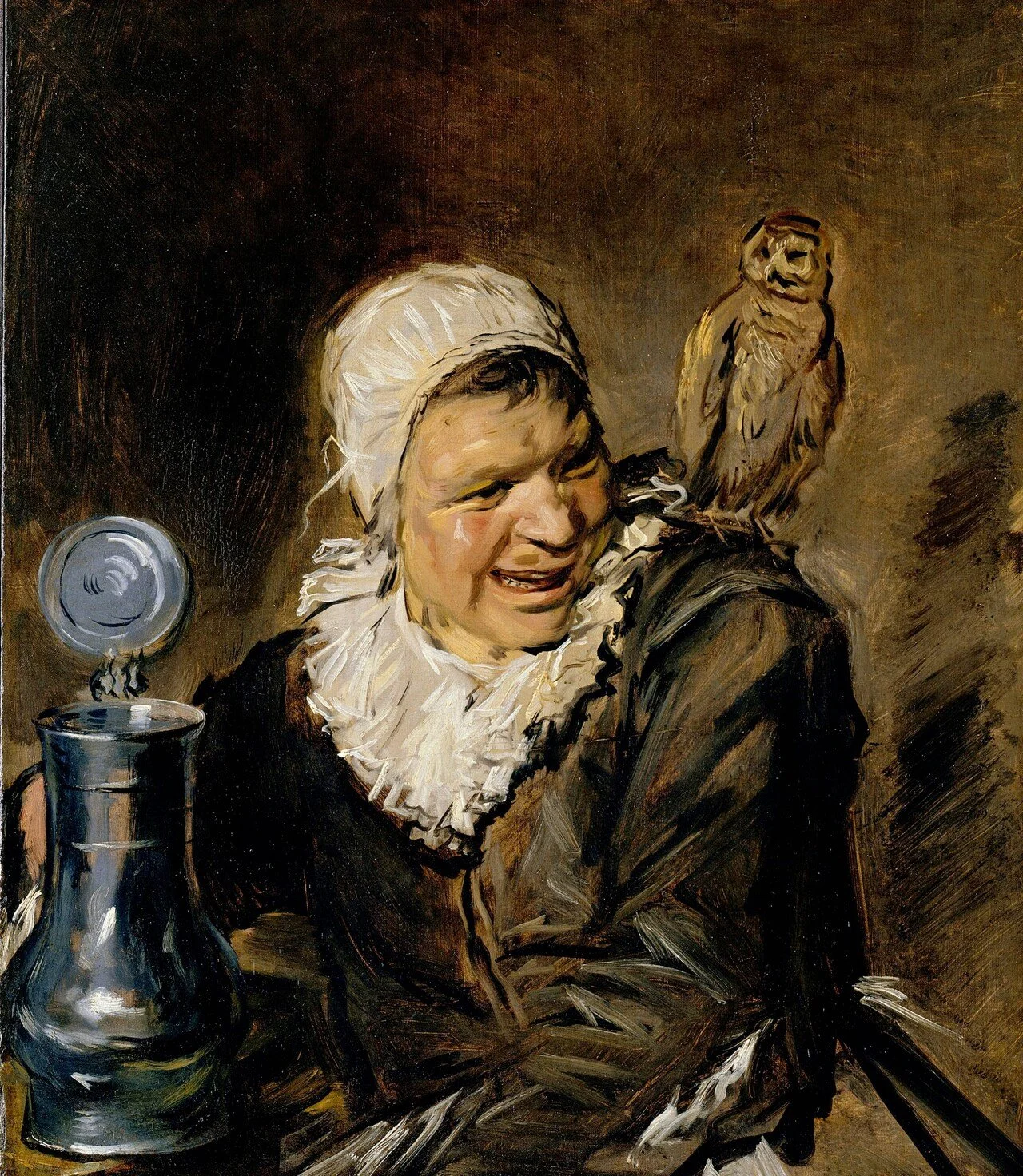Frans hals
NATIONAL GALLERY, LONDON
30 SEPTEMBER, 2023—21 JANUARY, 2024
“Frans Hals is a colourist among colourists,” enthused van Gogh in a letter to his brother Theo in 1885, “a colourist like Veronese, like Rubens, like Delacroix, like Velázquez.” With testimonials like this, it’s no wonder anticipation for the National Gallery’s recently opened Frans Hals survey was high. As curator Bart Cornelis stated prior to the opening: “No one under the age of forty has been able to acquaint themselves … with the genius of one of the greatest portrait painters of all time.”
Paintings are loosely grouped and separated into different rooms by theme; Early Work; Portraiture into Art; Invented Characters; Family Ties; Up Close; Late Work. Nevertheless, there is an emphasis placed on charting the evolution of Hals’s brushwork. An enthralling transformation that, as van Gogh keenly observed, takes place alongside a dynamic use of colour.
Images from the apex of Hals’s artistic trajectory greet us early on. Portrait of Cunera van Baersdorp (about 1625) and The Laughing Cavalier (1624) show his burgeoning flourishes of quick-appearing sweeps and dashes that enliven the densely layered compositions, both elemental to the image portrayed and elevating it beyond this into a work of art in and of itself. Likewise, the placement of wisps of white used to highlight the creases in the man’s coat around his torso and as it folds over his cocked arm in Portrait of a Man (1630), some as fine as a spider’s web reflecting sunlight, are so masterful that the rest of the portrait seemingly dissolves into background noise. Yet step back just enough, and the composition suddenly pulls together.
In the large-scale group portraits Militia Company of District XI under the Command of Captain Reynier Reael, known as ‘The Meagre Company’ (1633 [completed by Pieter Codde, 1637]) and Banquet of the Officers of the St George Civic Guard (1627), Hals demonstrates his ability to translate this visual feat across vast, complexly structured compositions that are teeming with life. The standard bearer seen at the far left of the former, van Gogh wrote again, is an astonishing ensemble of vivid colours that somehow forms a rhapsody in pearl grey. Equally as spectacular are the many subtle variations of black that Hals employs across both paintings in the figures’ clothing, often offset with concentrated areas of vigorous white brushwork that allow the colours mixed-in to surface tantalizingly. All the while, we are pulled to-and-fro, trying to savour every meticulously employed master stroke only for another to steal focus as it is glimpsed in our peripheral vision.
In an enclave leading to the final room, we see Hals’s ability to apply this to small-scale paintings. Each one is effervescent with the individual character traits of the sitters and just as impactful as his larger paintings: a man leaning back on his chair like a cocksure schoolboy in Portrait of Willem van Heythuysen Seated in a Chair (about 1638), for example, or the engrossed facial expressions seen in Girl Singing (1625–30) and Boy Playing the Violin (1625–30), a pair of rare diamond-shaped pendant paintings. Despite their small size, Hals’s unmistakable painterly DNA is all over them. It’s seen in the daringly bold streaks of deep brown creases of van Heythuysen’s coat and jagged stabs of dark gold that illustrate the crumples of the curtain seen at the top right of the composition. In the pendant paintings, it’s seen in the strands of the girl's hair and the way Hals models the boy’s hand and fingers holding the violin bow. But his mark-making is never boisterous. It doesn’t take over, as you would expect in such a small area, particularly in the case of the pendant paintings, each measuring under 8 by 8 inches.
The real power that this survey cultivates, however, lies in the late works seen in the final room, where Hals’s output begins to divide opinion, and “the spontaneous becomes habitual,” as Craig Raine observed in the conclusion of his review for The Spectator. The room is sparsely populated, but even so, there is a palpable electricity derived from the marked shift in Hals’s brushwork which becomes increasingly brazen. Yet, throughout the survey, the plentiful premonitions that forecast Hal’s trajectory to this point dispel any notion that this should be seen as becoming “habitual.”
Hals allows the background to softly infuse with pale orange of the standard held by the standard-bearer that so enraptured van Gogh, while simultaneously lifting it into the foreground with cleverly orchestrated passages of sharp pale yellow and inflections of white that illustrate the light and shade of the cascading fabric, providing the painterly scaffolding that the artist uses to sculpt the brooding Portrait of a Man in a Slouch Hat (about 1660) out of the background as loosely as he does. In Malle Babbe (about 1640), the careening brushwork that so captivatingly and endearingly embodies her drunkenness, particularly her sallow flesh, is muscularly built upon in the powerful hands and weathered faces, crafted in luminous flesh tones, in the monumentally sized Regents of the Old Men’s Alms House (about 1664), painted—unbelievably—when Hals was around eighty-two years old.
Instead, Hals is pushing the parameters his painterly vocabulary established earlier in his career, akin to Picasso or Matisse later in their lives, when an innate skill honed over a lifetime collides fascinatingly with a fearlessness and intrepidness that can only come with old age. Hals maximizes the duality of each stroke’s poetic and representational potential in such an audacious manner that he prophetically captures the spirit and direction painting develops through the late modern era. As a result, these works feel alive in ways that his earlier works can’t. The mesmerizing, angular criss-crossing of thick, richly nuanced black marks seen across the torso in Portrait of an Unknown Man (about 1660–63), as a prime example, looks forward through centuries to Robert Motherwell and Franz Kline as much as it harks back to quintessential Hals.
First published by The Brooklyn Rail
https://brooklynrail.org/2023/07/artseen/Lavinia-Fontana-Trailblazer-Rule-Breakerhttps://brooklynrail.org/2023/11/artseen/The-Credit-Suisse-Exhibition-Frans-Hals
